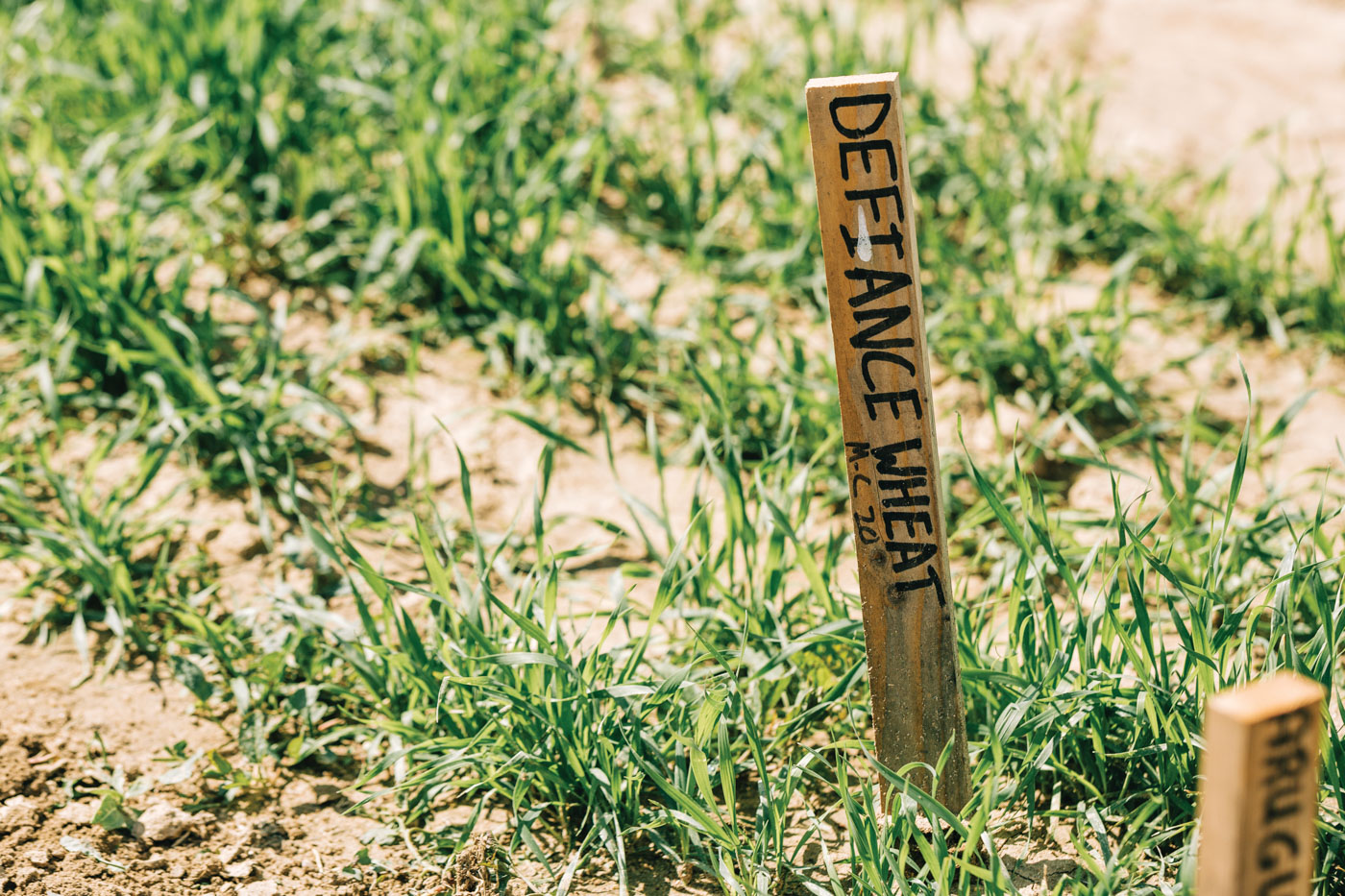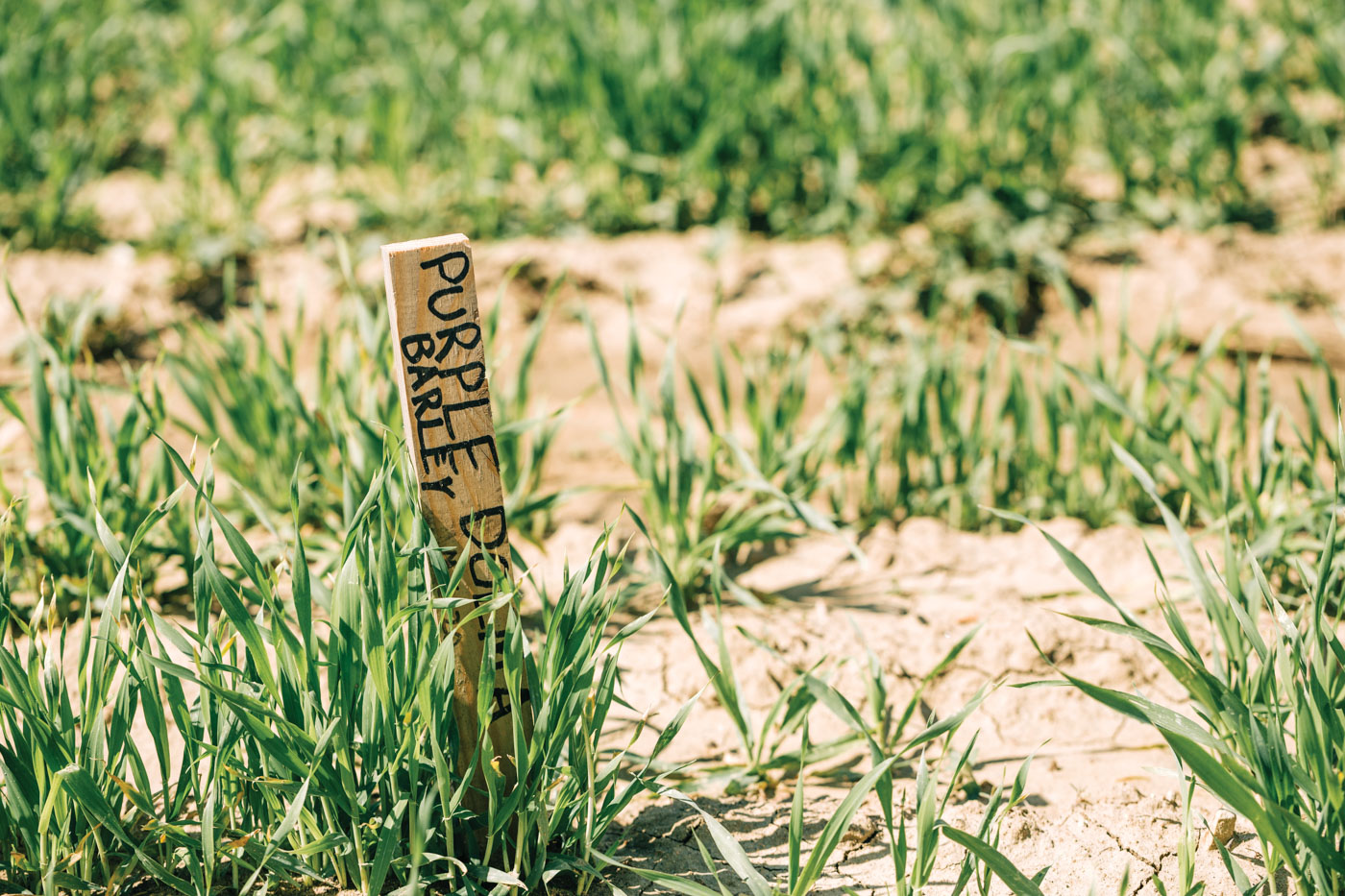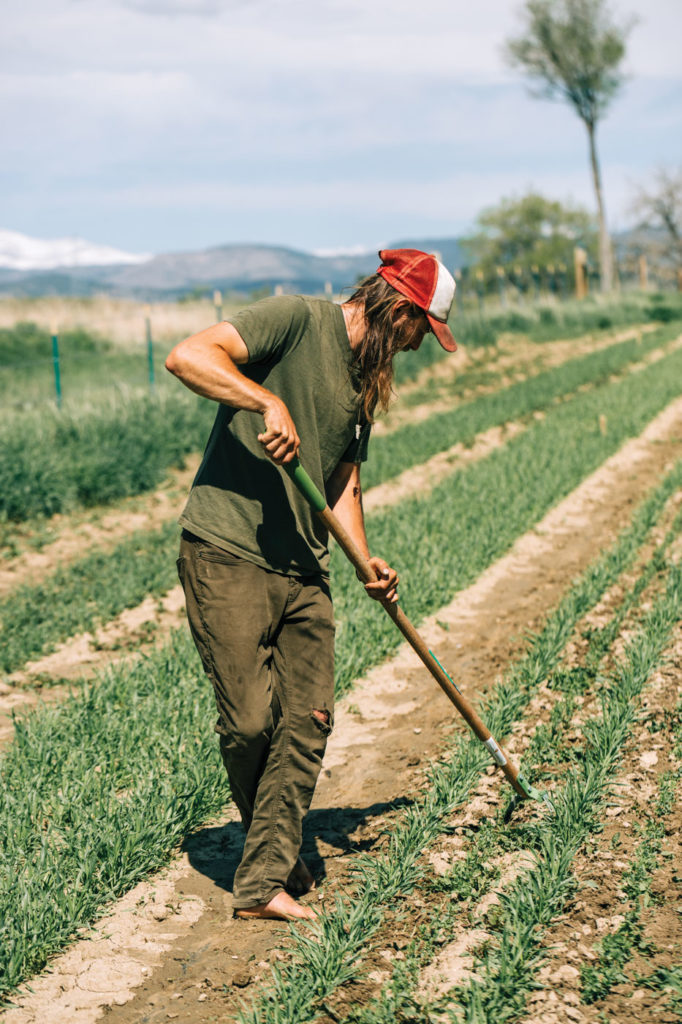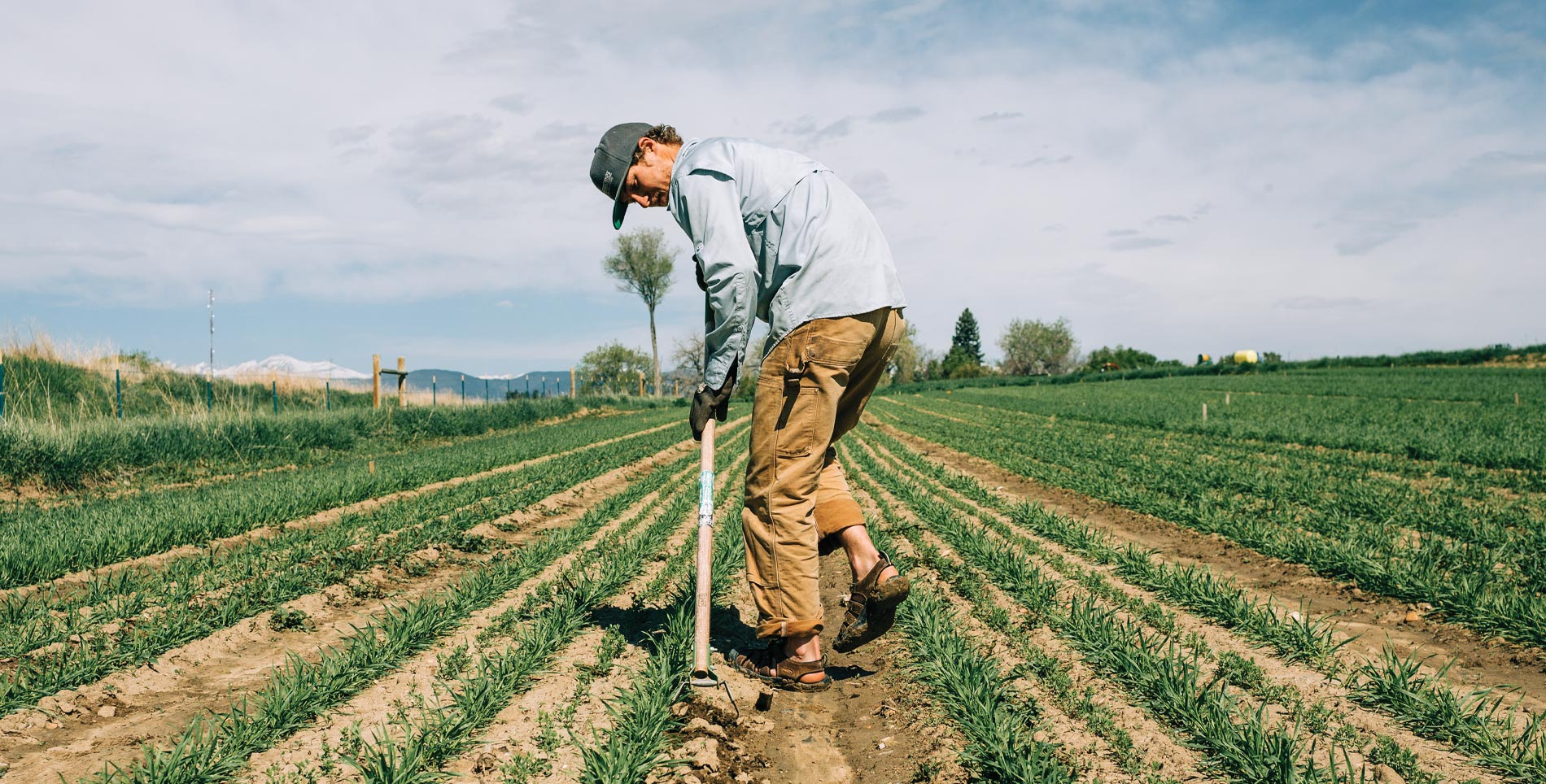Grains have long been considered a staple of the human diet, but the process of growing and producing these everyday essentials—from flour, to pasta, bread, rice and corn—is anything but basic. Across the country, local grain cooperatives consisting of farmers, bakers, chefs, academics and activists are banding together in support of heritage, pre-industrial grains. However, simply championing the adoption of these biodiverse, nutrient-rich products is only the tip of the iceberg.
To understand the full complexity of our relationship with grains, we have to look back to the agricultural revolution. As humans began to trade the gathering and hunting of nomadic cultures for a more settled farming lifestyle, we proactively chose to plant crops with a high caloric output. In the case of grains, annuals—which have only one shot at procreation—put all of their energy into the creation of seed, whereas perennials’ multi-year timeline results in a less robust crop. For that reason, nearly all of the grains grown by humans today are annuals.
By their nature, annuals need to be replanted each year—therein lies part of the problem. To plant a seed, you have to disturb the soil, a process typically known as “tilling,” which can contribute to increased topsoil erosion. At the same time, the modern system of industrial agriculture incentivizes farmers to focus on one or two crops (known as a “monoculture”), rather than a diversified rotation. Each of these crops—including grains—pull specific nutrients out of the soil, which then need to be replenished. Repeated year after year, this pairing of topsoil disruption and depletion of the same key nutrients has become a driving factor in our current global crisis of poor soil health.
Philip Taylor, a soil biologist and the founder of Mad Agriculture, a regenerative farming consultancy in Colorado, understands the challenges of grain farming all too well. “People think that as long as you farm organic, you’re helping the environment, but organic crops created the Dust Bowl. While organic farming is better for the health of both the farmer and the consumer, repeatedly growing any crop as a monoculture—organic or not—is unsustainable.”

Since founding Mad Agriculture, Taylor has helped dozens of farmers across the country reimagine their multi-year crop plans. In the process, he has become deeply aware of the issues that keep well-intentioned farmers from making a shift to more regenerative practices. First among them is the question of financing. “Banks are used to funding what’s ‘normal’—subsidized GMO crops that are considered to be low risk,” Taylor explains. To help solve this problem, Mad Agriculture has raised seed capital for a fund that provides loans to farmers transitioning commercial acreage to organic, regenerative land management, yet getting other lenders to look further into the future remains a significant hurdle.
Luke Peterson, a first-generation Minnesota farmer, vividly remembers the process of seeking traditional funding for an organic, biodiverse farm. “The guy laughed at me,” Peterson recalls. “He said I needed equity or collateral to start the business, so I had to cut back from the 350 acres [I was, then, conventionally farming] to just 80 acres. I was forced to use my own house as collateral, and if we had a disaster in that first year, we never would have made it.”
Anna Jones-Crabtree, co-founder of Vilicus Farms in Montana, echoes Peterson’s experience. “If we want to change how we farm, we have to change how we share the risk. Farmers pay all of our inputs (seed, payroll, fuel, insurance, etcetera) up front, and we don’t get paid back for 18 months—that’s if you have a crop.” To mitigate her risk, Jones-Crabtree works a second job to provide health insurance for herself and her husband. Despite farming 13,000 acres of higher-value organic crops—from three kinds of wheat, to barley and oats—they still can’t afford to provide health insurance for the rest of the Vilicus team.


To make matters worse, the limited financial resources regenerative farmers face are often compounded by social ostracization. “There’s a lot of talk about regenerative farming—especially with climate change—but other young farmers gave me flack for pursuing it,” Peterson remembers. “As I’ve become successful, some of the biggest naysayers have taken an interest in what I’m doing, but once they run the numbers versus their current crop subsidies and insurance returns for conventional farming, the math doesn’t justify making the switch.”
Yet for the 99% of U.S. farmland that continues to be stuck in a cycle of chemical farming, time may be running out. It takes approximately 1,000 years for three centimeters of new topsoil to form under agricultural conditions, and experts at the Food and Agriculture Organization of the United Nations have predicted that, given current rates of soil degradation, we have less than 60 viable harvests left. This widely reported statistic illustrates the agricultural urgency of the soil crisis, yet the poor health of our topsoil is also a significant contributor to the overall climate crisis, as richer soil, dense with organic matter, is also better able to sequester and store carbon.
“Modern farmers may operate in an annual cycle, but the best farmers think intergenerationally,” Taylor emphasizes. “The industrialization of agriculture, in trying to make things more simple, has devalued the intelligence of the farmer. In turn, the modern commercial grain farmer is spending more time in a combine or on an iPad than walking their field, taking a shovel to the soil to see what it needs.”
Jones-Crabtree shares Taylor’s concerns, and has started an organic farmer apprenticeship program to help bring fresh perspectives to the industry. “Soil regeneration is an ongoing learning experience that doesn’t align with quarterly profit cycles. You can’t just follow a certain checklist, and then suddenly the soil will be awesome or amazing,” she explains. “We have to up the game of being more professional as farmers and make organic farming a viable career path so we can attract people who are entrepreneurial, who want to think creatively about how to make things better on a planet with a changing climate.”


Thinking outside the box is exactly how Peterson has made A-Frame Farms a success. When he shifted to 100% organic farming, he began by reaching out directly to local brewers, bakeries and millers who already use alternative crops or seeds. With the assistance of social media—where he posts about his day-to-day exploits on the farm—he now directly markets 90% of his crops to like-minded food industry buyers. Most conventional growers, by contrast, sell to a centralized grain elevator who acts as a broker, rather than dealing with the buyers themselves.
These direct-to-farmer relationships are one of the ways small food businesses, brands and consumers can help support likeminded farmers. “The heritage grain movement has been one of the best and most powerful forces for reimagining our local agriculture economy,” Taylor notes. “When brands are able to establish a mutually beneficial supply agreement, we’re connecting the city to the country and enabling rural society to take greater pride in what they’re producing.”
Quinn Snacks, a grain-based brand in Boulder, Colorado, is just one example of a small food company that is helping to reimagine the supply chain. Their Band of Brands initiative, which leverages Mad Agriculture’s network to spark candid conversations with farmers, incentivizes other brands to pay more for value-added crops or to share some of the farmer’s financial risk. Small bakeries—like Baker’s Field Flour & Bread in Minneapolis—have also played a critical role for farms like Peterson’s. Yet to fully support regenerative farmers requires support for the full biodiversity of their farms, not just their grains.
As a slightly larger operation—though still small, by commercial farming standards—Vilicus Farms cannot sell the full diversity of its crops through just one or two local supply chain relationships. “With all due respect to smaller growers—which we need, especially to help urban populations understand where food comes from—we need an at-scale solution,” Jones-Crabtree emphasizes. “There are 18 million acres of cropland in Montana. There’s glyphosate [a water-soluble herbicide currently under investigation for causing cancer] in our rainwater. The local food movement doesn’t always reach frontier communities like ours.”
Even when Vilicus finds a buyer for large quantities of its organic crops—like 700 acres of oats—variations in growing conditions can also cause unforeseen issues. “We had particularly dry conditions at harvest, and the industrial processor we had a contract with couldn’t process the oats,” Jones-Crabtree remembers. “There was no flexibility to adapt the processing and the milling to oats that didn’t exactly meet their specifications, even though it was still a successful, viable crop.”
Infrastructure is a constant challenge for small or diversified farmers, given the centralization of seed cleaning and milling within the industry. “I considered building my own seed cleaning facility,” Peterson notes. “But when I’m marketing winter wheat, einkorn, emmer, flax, buckwheat, sunflowers and Kernza (the world’s first perennial grain)—I would never have the time or the manpower, let alone the machines, to process all those crops myself.” Early on, Peterson was lucky to find a local seed cleaner who would slot his crops in after larger organic growers, avoiding the need to clean the machines. Yet for most farmers, if you can’t produce a full truckload of grain, no one is bending the rules to help you out.
It takes the shared efforts of a community—from farmers, to processors, to buyers—to make regenerative agriculture a success. “Most farmers pursuing regenerative agriculture are isolated geographically, ideologically … they’re surrounded by people who judge them for taking a risk,” Taylor explains. “I’ve heard story after story of a farm going organic and their son not getting to be quarterback on the football team anymore.” Without financing, a guaranteed buyer or a sympathetic community of other agriculture professionals, farmers are stuck between a rock and a hard place.
“There are some inherent false assumptions,” Jones-Crabtree says. “People think that if farmers just change what we’re doing, nobody else has to shift. Yet regenerative farms are more than food factories—they clean our air, clean our water, take care of our soil—and no one pays us more for those services. If we want to support the next generation of farmers and increase career interest in agriculture, we need to think on how our human systems can include nature in our decision-making processes. We need diversified crop rotations, but we also need to provide long-term, stable support for the people doing this work.”







Our comments section is for members only.
Join today to gain exclusive access.